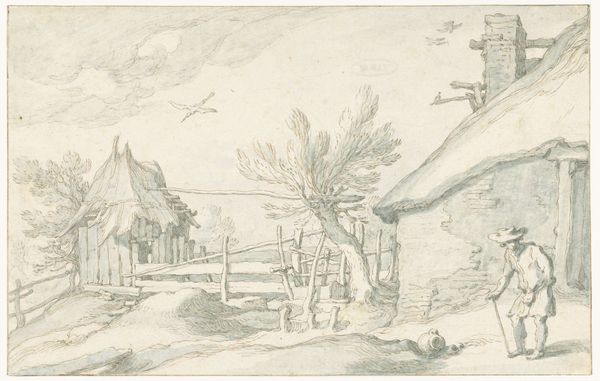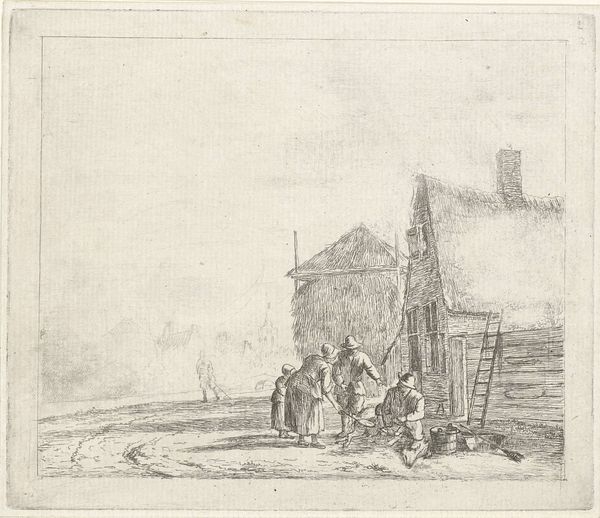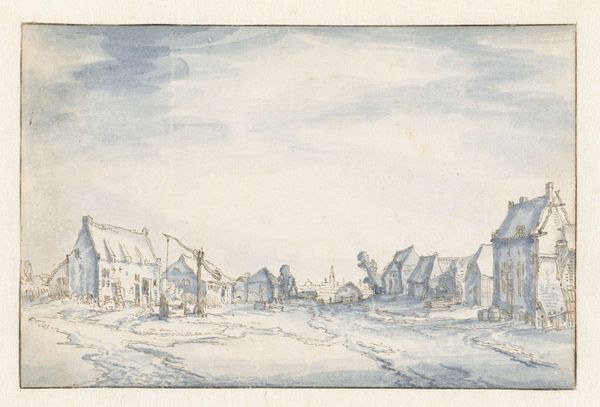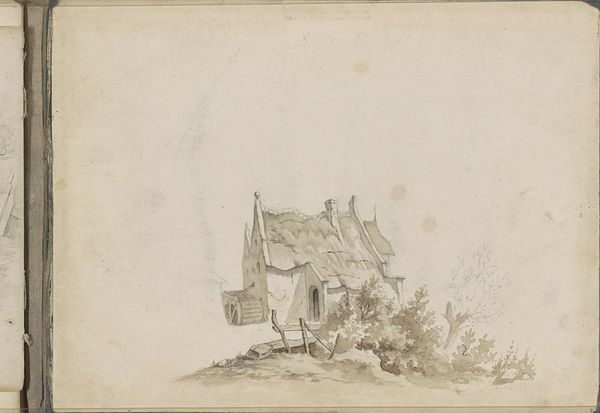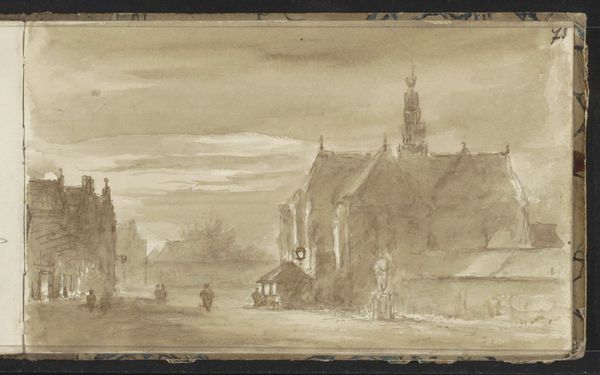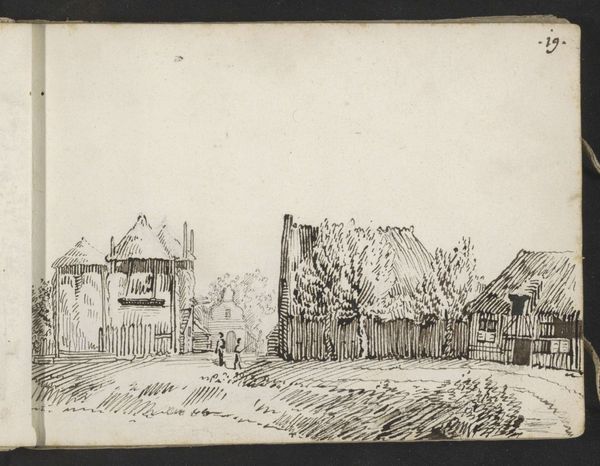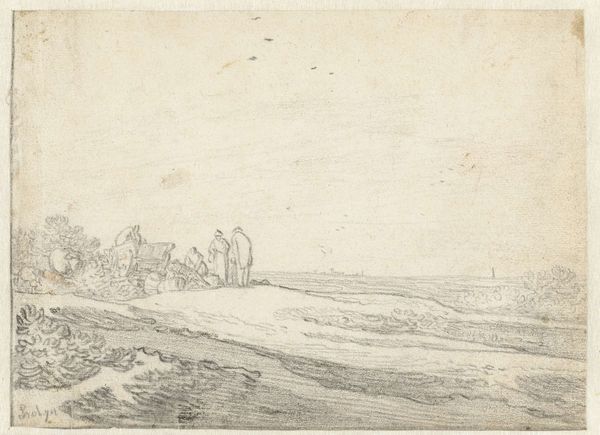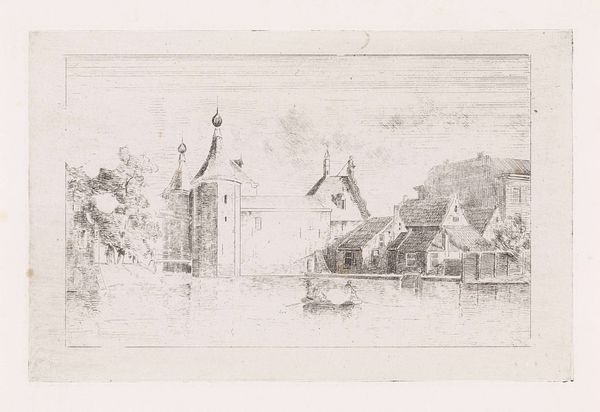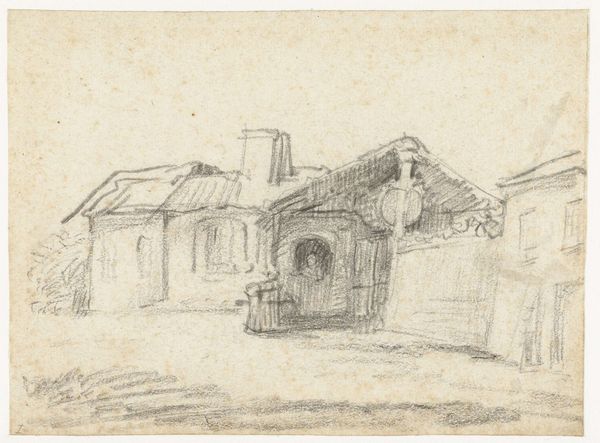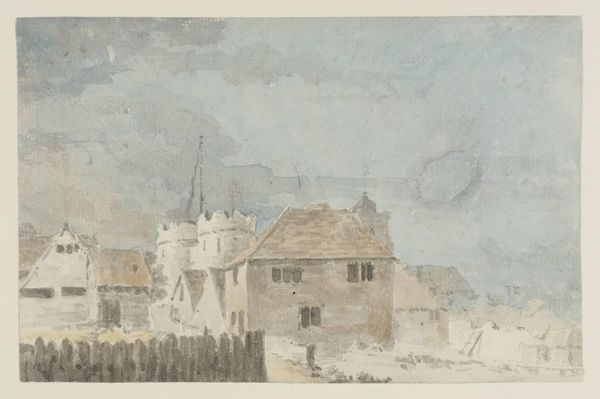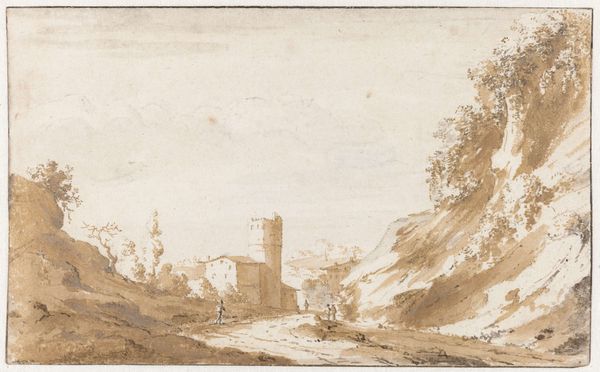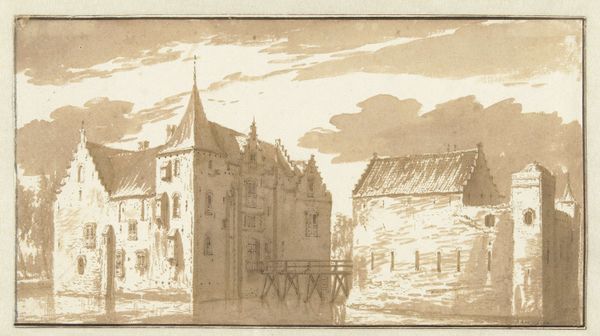
drawing, pencil
#
drawing
#
dutch-golden-age
#
pencil sketch
#
landscape
#
charcoal drawing
#
pencil
#
genre-painting
Dimensions: height 123 mm, width 220 mm
Copyright: Rijks Museum: Open Domain
Curator: We are looking at a 17th-century drawing titled "Vervallen boerderijen", or "Dilapidated Farmhouses," from the Rijksmuseum's collection, rendered in pencil. Editor: It evokes a sense of stark isolation. The muted tones and the fragile, skeletal structures suggest transience and decay, doesn't it? Curator: The social context of the Dutch Golden Age is crucial. There was burgeoning mercantile wealth, but simultaneously the expansion of towns impacted rural life. Images of ruins and rural decline speak to a shift in economic power. Consider the material vulnerability represented. The pencil, charcoal even, documents the ephemeral nature of both representation and reality. Editor: Certainly. But note how the artist plays with light and shadow to create depth within a monochrome palette. The strategic hatching and cross-hatching describe the textures of the thatched roofs, the worn wood—creating a palpable sense of form. The composition itself guides the eye from left to right, over the crumbling forms. Curator: It's less about "form" than it is about the formal economy of the period. Whose labour constructed these farmhouses? Whose lives were sustained or undermined by their presence, and eventual abandonment? What did it mean for rural labor in this rapidly changing economic environment? This piece asks those questions through its depiction of decline and abandonment. Editor: I agree there's a clear narrative element tied to the passage of time and history, but the sheer craftsmanship with the pencils needs to be celebrated. Also the aesthetic—this limited tonal range allows for the nuances of the drawing. Observe the detail in the rendering; how it captures both texture and form with a deftness that amplifies the drawing's elegiac tone. It's almost mournful. Curator: Perhaps "elegiac" for the older agrarian ways. Ultimately, I think the power of the piece resides in its unblinking depiction of the cost that progress levied on certain communities. Its existence, in and of itself, highlights shifts in labor that created social conditions in the 17th century. Editor: A vital tension that indeed enriches the piece—giving us both form and socioeconomic history within a deceptively simple sketch.
Comments
No comments
Be the first to comment and join the conversation on the ultimate creative platform.
